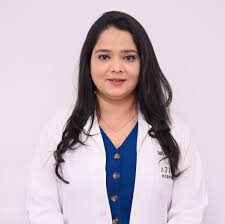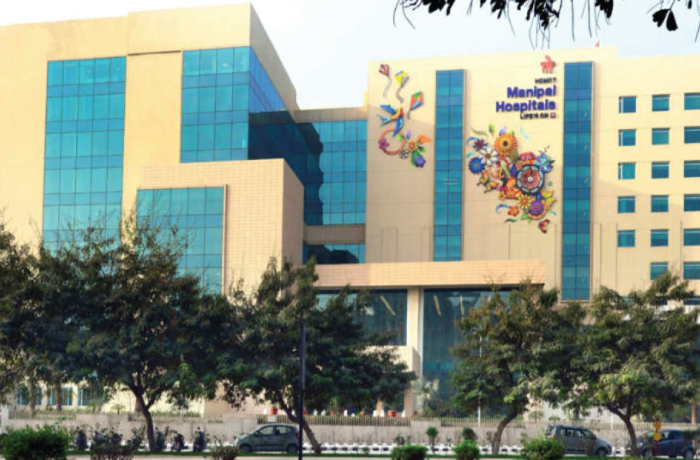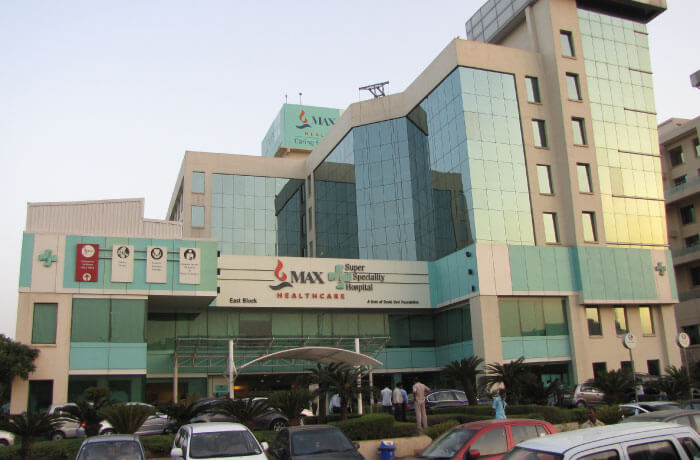Cosmetic Surgery
Scalp Avulsion
Scalp Avulsion
Scalp Avulsion Treatment in India offers advanced reconstructive microsurgery to restore appearance and function. Expert surgeons ensure safe, affordable, and high-quality care for patients.
Suture removal after scalp surgery
Post-scalp surgery suture removal is a very vital post-operative procedure. The scalp is also very vascular and thus, heals fast, but it needs the careful attention to prevent any infection, bleeding or scars.
Timing of Suture Removal
- Duration: Sutures are typically taken out 7-10 days after surgery.
Factors influencing timing:
- Surgery type: Larger incisions or flap surgeries can take more time to heal.
- Healing rate of the patient: Age, nutrition and medical conditions (such as diabetes) may influence the healing.
- Sutures type: The use of absorbable sutures might not require removal.
Who should remove the Sutures?
Sutures should be taken out by a skilled physician or trained nurse to avoid infection or unhealthy recovery.
Only a few days after surgery lead to wound dehiscence; only many days after surgery result in scarring.
Scalp avulsion treatment
Scalp avulsion treatment is regarded as a surgical emergency, as this technique implies partial or total tearing of the scalp that may result in the loss of a lot of blood and infection unless the surgery is performed immediately. Here’s a detailed overview:
Immediate First Aid
Control Bleeding
- Use direct pressure using sterile gauze or clean cloth.
- Elevate the head if possible.
Re-tie Avulsed Tissue (when torn off)
- Wash with sterile saline to wash off dirt.
- Cover the tissue with a wet sterile cloth.
- Put it in a closed plastic bag and freeze it on ice (do not come into direct contact with the ice).
Prevent Shock
- Keep the patients lying down.
- Monitor vital signs.
Hospital Management
Assessment
- Assess extent of scalp avulsion, scalp viability and related injuries (skull fractures, injuries to the face).
- Determine the blood loss and vital signs.
Wound Cleaning
- Vitality of tissue: Comprehensive debridement.
- Sterile saline irrigation to eliminate contaminants.
Reattachment/ Reconstruction
Depends on tissue condition:
Primary Replantation
- Scalp reattachment by micro-surgery.
- Success factors: Clean tissue, short ischemia time, skilled microsurgeon.
Partial Scalp Loss
- Skin grafts or local coverage of the flaps can be needed.
Delayed Reconstruction
- Unless it is possible to reattach immediately, temporary wound cover with dressings and delayed grafting.
Scalp wound suture removal Procedure
Preparation
- Use clean hands and put on sterile gloves.
- Wash the area of the wound with antiseptic solution.
Equipment Needed
- Suture removal scissors or sterile scissors.
- Sterile forceps.
- Gauze or cotton swabs.
Removal Steps
- Slowly pass a knot using forceps.
- Cut the suture as near to the skin as possible to reduce pulling dirty thread through tissue.
- Very carefully remove the suture.
- Repeat for all sutures.
Post-removal Care
- Wipe down the space once again with antiseptic.
- Use antibiotic ointment in case of prescription.
- Apply a sterile dressing, where necessary.
Post-surgery suture removal care
The following is a detailed procedure to follow when removing sutures after surgery to achieve optimal recovery and reduce occurrence of complications:
Proximate Care Following Suture Removal
- Clean the place: Push the sore in the mild soap and water or as your doctor instructs.
- Application of antiseptic: antiseptic solution (such as povidone-iodine) or prescribed antibiotic ointment.
- Cover when required: Use a sterile dressing on the areas that are likely to be friction-causing or contaminated.
Keeping the Wound Clean
- Wash hands prior to coming into contact with the wound.
- Do not swim or soak the area within 24-48 hours.
- Apply soft and non-aggravating cleansers; not severe chemicals or alcohol.
Avoiding Trauma
- Do not scratch, pick or rub the healing site.
- Keep the wound dry of tight clothes, hats or helmets that could be frictional.
- Do not engage in intense physical exercises that become a stretch to the wound before it is totally healed.
Monitoring for Infection
Watch for:
- Wound erythema or warmth.
- Swelling or tenderness
- Pus or foul odor
- Increasing pain
- In case any of these happen, call your doctor.
Scar Management
- Sun protection: Keep out of the sun; apply a sunscreen on the area or cover it with protective clothing.
- Moisturization: After complete sealing, moisturizing cream or silicone gel can be used to inhibit the occurrence of scars.
- Massage: Massage of the scar with cream or oil (only with your doctor) can be helpful in improving the texture of the scar.
Follow-Up
- Visit post-suture follow-ups.
- Report late healing, bleeding, or discharge.
Lifestyle Tips
- Eat well (protein, vitamin C, zinc) to facilitate recovery.
- Avoid smoking and alcohol abuse, which is slowing recovery.
- Make sure that the skin is well hydrated.
Scalp avulsion surgery recovery
The following is a step-by-step description of scalp avulsion surgery recovery, timeline, care, and complications:
Short-term Post-Surgical Recovery
- Hospitalization: 2-7 days (depending on the severity of the injury and surgical intervention, microsurgical replantation, graft, or flap).
- Monitoring: Infection signs, wound perfusion, and vital signs.
- Pain treatment: Painkiller medications are prescribed.
- Antibiotics: To prevent infection as a result of open wound and surgical repair.
- Dressing changes: Initially the dressing must be changed frequently with sterile dressing.
First 2 Weeks After Surgery
- Wound management: Maintain a clean and a dry surgical site.
- Scalp elevation: When advised, in order to decrease swelling.
- Limitations on activities: Do not subject it to hard work or bending or heavy lifting.
- Observation: A scalp with poor blood supply may have swellings, reddening or darkening of the tissue.
- Follow-up visits: The surgeon performs frequent checks to check the healing process and viability of the tissues.
2–6 Weeks Post-Surgery
- Stitches/sutures: Typically taken out in 714 days, depending on wound healing.
- Care of the hair: Wash hair gently; do not use harsh chemicals, hair dyes, tight styles.
- Exercise: Decreasingly resume mild exercise.
- Scar management: Silicone gels or creams can be prescribed to reduce the scar.
6 Weeks to 3 Months
- Hair growth: Could begin in the regions where the scalp was replanted or grafted, it did not grow fully before 612 months.
- Scar maturation: Scars become flatter and fade away; massage or prescribed interventions can be helpful.
- Complication surveillance: watch out alopecia, hypertrophic scars, and contractures.
Long-Term Recovery
- Full recovery: It may take 3 or 12 months, depending on the viability and the injury.
- Recommended additional procedures: Scar revision, repeat grafts, or hair restoration may be required.
- Psychological counselling: Scalp avulsion may cause severe trauma; counselling can be useful.
Factors Affecting Cost of scalp avulsion treatment in India
Scalp avulsion treatment in India is very expensive depending on a number of factors which include the severity of the injury, the type of surgical procedure needed, the place and reputation of the health facility and the skills of the involved medical teams. The major variables that affect the cost are as follows:
The Intensity and the Size of the injury
- Partial Scalp Avulsion: Cases that are less complicated can include local flap or skin grafting, which are less costly.
- Complete Scalp Avulsion: More complicated cases might demand the usage of microsurgical replantation, which is more costly.
The Nature of Surgical Intervention
- Microsurgical Replantation: This entails the repositioning of the pulled off scalp tissue and this involves specialized equipment and skills.
- Skin Grafting or Flap Surgery: Other forms of covering the open portion, where the cost of doing it will differ depending on the complexity.
Healthcare Facility
- Private Hospitals: They were more likely to be more expensive because of high-tech facilities and specialized care.
Location
- Metro Cities (e.g., Delhi, Mumbai, Bengaluru): It is more expensive because of a higher level of demand and high operation costs.
- Tier 2 and Tier 3 Cities: These are not as expensive, but there might not be special care available.
Surgeon's Expertise
- Surgeons with high-level experiences can be more expensive in their services, yet their experience can result in a higher success rate and possibly a reduction on their long-term costs as they have lesser complications.
Additional Costs
- Pre-operational Tests: Blood tests, radiographies and other diagnostic tests.
- After-surgical Treatment: Drugs, check-ups, and possible rehabilitation.
- Reconstructive Procedures: The additional procedures of cosmetic or functional repair.
Best hospitals for scalp avulsion in India
- Artemis Hospital, Gurgaon
- Medanta-The Medicity, Gurgaon
- Fortis Memorial Research Institute, Gurgaon
- Max Hospital, Saket
Conclusion
Scalp aviation is a life threatening condition which demands immediate and specialized surgical intervention to restore the scalp, avoid infection and reduce long term complications. Depending on the extent of the injury, treatment may involve microsurgical replantation or skin grafts and even flap reconstruction. Recovery is only successful with early intervention, adequate post-operative care and regular follow-ups and complete healing and regrowth of hair may take several months. Having prompt medical care and following the recommendations of post-surgical care, the patients will be able to obtain the most favorable functional and cosmetic results, which will decrease the chances of complications and scarring.
Affordable scalp suture removal treatment GetWellGo
GetWellGo is regarded as a leading supplier of healthcare services. We help our foreign clients choose the best treatment locations that suit their needs both financially and medically.
We offer:
- Complete transparency
- Fair costs.
- 24 hour availability.
- Medical E-visas
- Online consultation from recognized Indian experts.
- Assistance in selecting India's top hospitals for Scalp suture removal treatment.
- Expert surgeon with a strong track record of success
- Assistance during and after the course of treatment.
- Language Support
- Travel and Accommodation Services
- Case manager assigned to every patient to provide seamless support in and out of the hospital like appointment booking
- Local SIM Cards
- Currency Exchange
- Arranging Patient’s local food
FAQ
What is scalp avulsion?
- Scalp aviation is a severe trauma in which a portion or the entire scalp is ripped off the skull. It is an emergency on the surgical front because of the danger of excessive bleeding, infection and tissue loss.
How often are the sutures taken out when the scalp is operated?
- Removal of sutures occurs normally 7-14 days after surgery, based on the wound healing and surgical circumstances.
Is it possible to regrow hair after scalp avulsion?
Hair can grow in the places of effective tissue re-joining.
- Possible hair loss can be observed in the areas where it was done with grafts or flaps. Restoration of hair can also be thought of in future.
TREATMENT-RELATED QUESTIONS
GetWellGo will provide you end-to-end guidance and assistance and that will include finding relevant and the best doctors for you in India.
A relationship manager from GetWellGo will be assigned to you who will prepare your case, share with multiple doctors and hospitals and get back to you with a treatment plan, cost of treatment and other useful information. The relationship manager will take care of all details related to your visit and successful return & recovery.
Yes, if you wish GetWellGo can assist you in getting your appointments fixed with multiple doctors and hospitals, which will assist you in getting the second opinion and will help you in cost comparison as well.
Yes, our professional medical team will help you in getting the estimated cost for the treatment. The cost as you may be aware depends on the medical condition, the choice of treatment, the type of room opted for etc. All your medical history and essential treatment details would be analyzed by the team of experts in the hospitals. They will also provide you with the various types of rooms/accommodation packages available and you have to make the selection. Charges are likely to vary by the type of room you take.
You have to check with your health insurance provider for the details.
The price that you get from GetWellGo is directly from the hospital, it is also discounted and lowest possible in most cases. We help you in getting the best price possible.
No, we don't charge patients for any service or convenience fee. All healthcare services GetWellGo provide are free of cost.
Top Doctors for Cosmetic Surgery
Top Hospitals for Cosmetic Surgery
Contact Us Now!
Fill the form below to get in touch with our experts.

.jpg)
.jpg)

.jpg)


